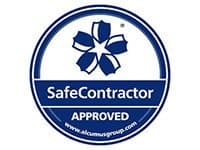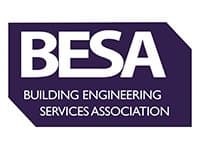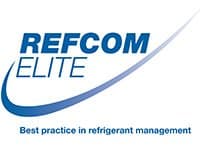A cleanroom is typically used in manufacturing, pharmaceuticals and research laboratories where a controlled environment with low levels of contamination is required. Cleanrooms vary in terms of usage by industry which means different ISO classifications apply and special considerations often need to be given to personnel protocols.
Take for example cleanrooms for biotechnology, pharmaceutical or biopharmaceutical industries, which are often specified between ISO Class 8 to ISO Class 5. Cross contamination is a particular focus in these industries, and whilst pharmaceutical and biotech cleanrooms may employ different methods for sanitisation; indoor and outdoor air filtration is of prime importance.
Regarding personnel protocols, it is relatively common for cleanrooms to adopt stringent personal protection methods such as hairnets, gloves, booties and full gowns. Medical device cleanrooms may not be as strict on gowning procedures as other cleanrooms, but cleaning and protocol is still vitally important. Some cleanrooms also classify processes for showers, depending on the level of classification.
Different cleanroom standards address airborne particle concentrations and levels of contamination. These are maintained especially well with HEPA filtration systems together with a specialist air conditioned installation in addition to cleaning and clothing requirements.
Contamination sources in cleanrooms
Sources of bacteria and contamination in cleanrooms can usually be traced back to:
Staff
Skin shedding, skin oils, spittle are major sources of personal contamination of cleanrooms. Contamination by fragrance and cosmetics can be achieved by not being worn in cleanrooms. Shedding fibres and lint from clothing materials should also be a consideration in reducing the risk of contamination in cleanrooms.
Cleaning equipment and materials
Careful consideration should be given to cleaning materials and equipment in preventing cleanroom contamination. Friction and vibration in cleaning methods, along with particle residue from dusters, mops and brooms are common sources of contamination that may need review.
Products
A major source of contamination in cleanrooms is often from the products being manufactured or worked with. Quartz flakes, silicon chips, aluminium and other debris are often by-products from certain processes and need to be reviewed against standards.
Fluids and environment
Bacteria often can develop in warm and moist conditions and add to cleanroom contamination. Other potential sources of contamination are floor finishes, chemical cleaning, coatings, plasticisers and deionised water.
Facility
Perhaps the biggest culprit of all with respect to cleanroom contamination is environment – the actual facility itself. Dirt, debris, dust, shavings, surfaces, materials can all add to contamination. Finally, detailed review and inspection of air conditioning systems should be undertaken as often spills, leaks or vapours could be adding to contamination of clean rooms.
How to reduce the risk of personnel contamination in cleanrooms
HEPA filters with a high participle efficiency, scrubs to remove participles and secondary filtration systems can all contribute to reducing or minimising cleanroom contamination. Air needs to pass clearly over surfaces therefore cleanroom features such as coved floors, covered light switches and specialised furniture may prevent the build-up of contamination and reduce turbulence. Humidity control can also be incorporated into your design to prevent moist conditions building up.
Procedures regarding dress codes should be strict and rigorously enforced. Hair ties and coverings may be required, along with shoe covering, depending on the classification of the cleanroom or the specific industry. Air showers may also be introduced for further stringency.
Total Environmental Kooling are experts in cleanroom installation, design, maintenance and repairs. For 20 years TEK have been designing cleanrooms using a variety of technologies to create bespoke solutions for customers all over the world.
To find out more about the importance of contamination within a cleanroom, get in touch with TEK by calling 0117952 3355 or fill in our contact form and we will get back to you.






